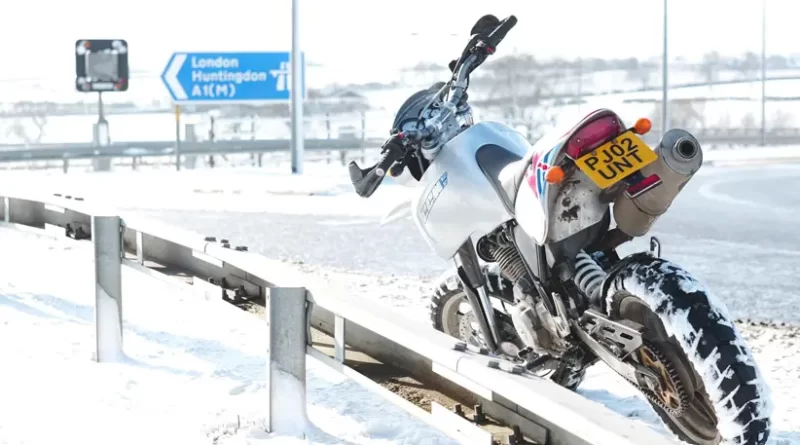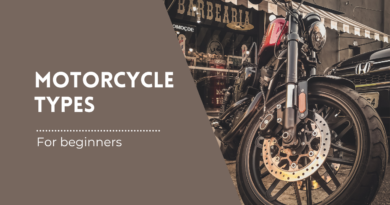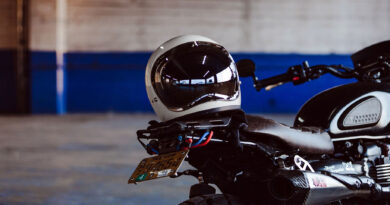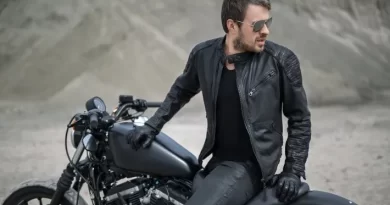10 Tips for Motorcycle Riding in the Winter
One of the greatest joys of life is to ride through all four seasons. Some people may think you’re crazy, you may get cold, and you’ll definitely need to pay extra attention to maintaining and washing your bike in salty circumstances.
The benefits, however, are substantial. To what extent, then, do your winter riding preparations differ from those for the summer? We teamed up with Rapid Training’s experts to learn their 16 secrets for navigating the trails throughout the winter (and, surprise! Most of these are relevant for biking in any season.
When it rains or snows, leaves, salt, or washed-in pebbles can stick to the road, making it slippery.
Shop your motorcycle gear here: Revzilla
For obvious reasons, this constant onslaught of dangers may make us anxious, and as a result, it’s simple to let our gaze drift more and closer to the bike with each possible problem we detect, until we’re virtually gazing straight down and missing important details. The secret is to employ “rolling road vision,” or what you normally would do in the summer.
You will have more time to comprehend the consequences and establish a plan of action if you constantly look ahead and update your observation rather than fixating on any specific peril.
Improving your capacity to perceive and understand detail at speed is the single most transformative thing you can do for your riding, regardless of the season; if you can do it in the winter, you’ll have an easy time of it in the summer.
To determine this, ask yourself, “So what?”
Excellent observational skills are of no value if the knowledge they provide is not put to good use. This makes the’so what?’ test even more crucial during the colder months.
So what if you’re speeding along and you notice a right-hander up ahead with some overhanging trees and a vehicle coming up behind you? Even though it’s OK where you are, it might imply that the road ahead is in the shade and is hence prone to ice.
That’s a load of… You should obviously approach cautiously, not just because you may lose traction but also because the van could. The’so what?’ mentality would tell you to wait until the vehicle has completed the turn before making your move.
A beginner cyclist always lines up in the center of the lane. An inexperienced rider may ride mechanically for position, constantly hanging left on right handers, for example, to maximize their visibility.
In the winter, though, a skilled rider will forego the scenery in favor of finding the greatest traction and slowing down accordingly. On a wet, slippery winter road you’re looking for the bits of tarmac with the most texture – ie not worn smooth by cars – or any dry bits, and you’re keeping out of the shadows where there might be ice lingering, even in daytime.
You constantly have to weigh where the grip is with where the best view is, and then alter your pace appropriately. It’s difficult to master, but once you do, you’ll be able to surprise yourself with how rapidly you can ride on wet and chilly roads.
Make sure to take breaks frequently.
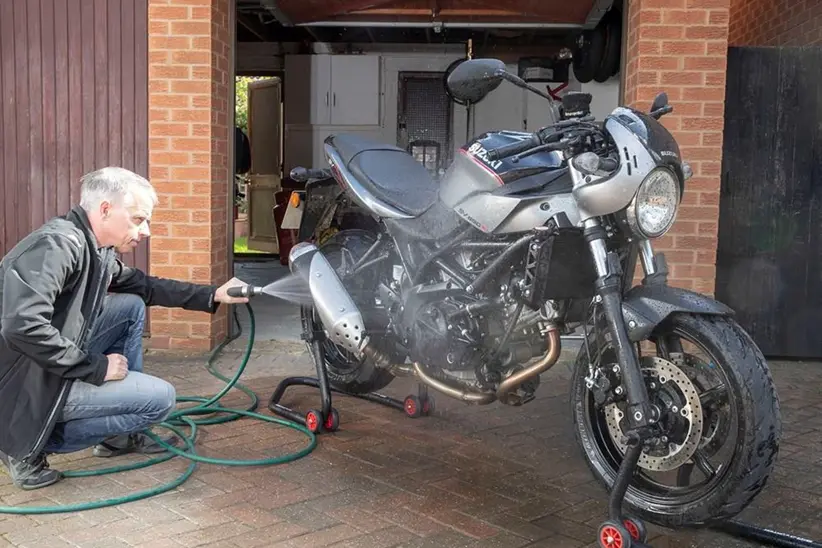
Shop your motorcycle gear here: Revzilla
With decent kit, most people can ride all day in freezing conditions provided they stop once an hour for five to ten minutes to get off the bike and get their body moving.
If there’s a café, it makes sense to have a warm drink, but if not, and you’re in the middle of the Lakes for example, just walk about and enjoy the view – it will set you up for the next hour in the saddle.
You’ll be in good shape to go back on the bike. There is absolutely no point pushing on for two or three hours and getting really cold. Besides being dangerous, it’s also a deeply unpleasant experience.
Take regular breaks whilst riding to stay warm
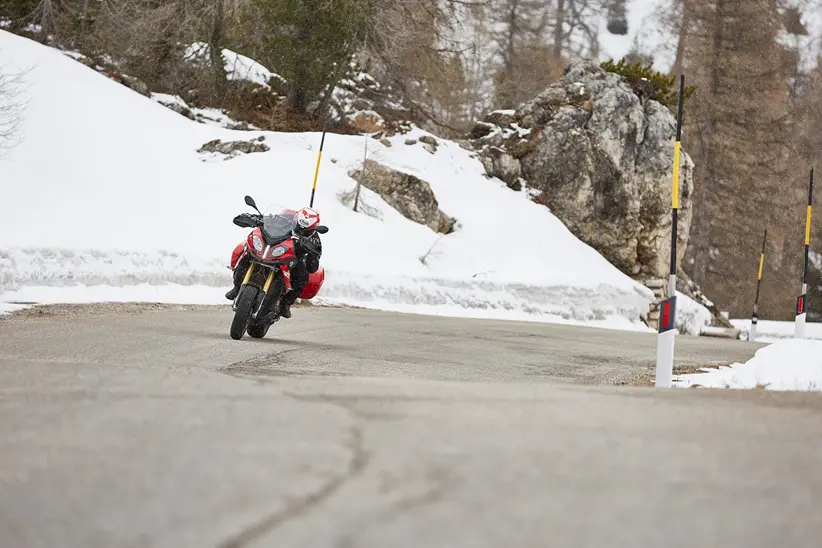
Shop your motorcycle gear here: Revzilla
Cars with frosted windscreens and wing mirrors are a nightmare – not just because the drivers can’t see much, but because they’re distracted by trying to sort out the situation.
If you see a car billowing exhaust fumes, the chances are it’s just been started and should be treated with maximum caution.
Understand the cold
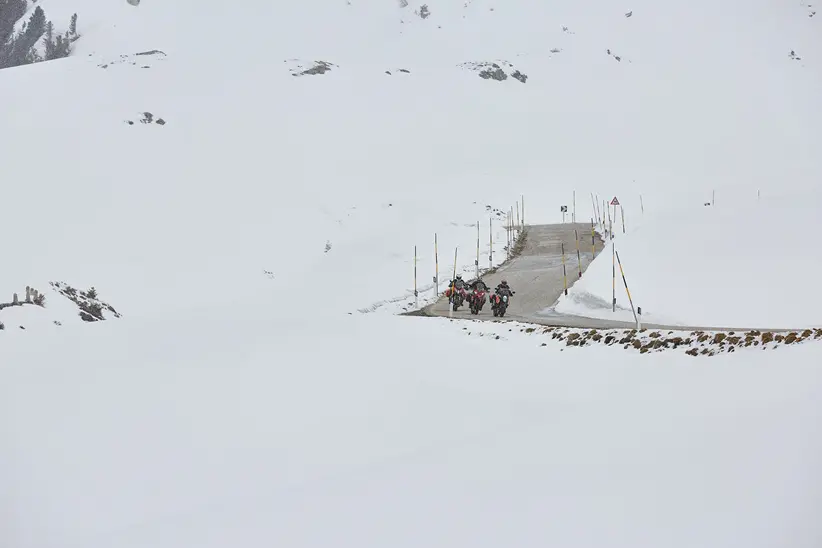
Shop your motorcycle gear here: Revzilla
Getting chilled is a very bad idea on a motorcycle for several reasons. For a start, there are dozens of studies showing how your brain’s processing speed slows down when your body’s core temperature drops even slightly.
That’s when you start making bad decisions. Not only that but your body becomes tense, which makes it difficult to control the bike, and if your hands get cold your ability to brake and control the throttle are seriously compromised.
Every rider’s sensitivity to cold is different, but the symptoms to look out for are the same:
- Cold hands and feet: This usually means your body is moving blood to your major organs. Stop as soon as possible to warm up.
- Shivering: This is your body’s attempt to warm up and means you’re becoming properly cold. Stop as soon as possible.
- Shallow or slow breathing: You’re well on the way to hypothermia. Stop immediately.
- Loss of coordination, poor throttle control, confusion? Seriously risky. Stop immediately.
- Check tyre pressures
Riding in the winter can be great fun
If it’s below 10°C, your tyre pressures will drop by 2-3psi, which doesn’t sound much but if your tyres were on the low side to start with this could be enough to make the steering heavy and give an unstable feeling on the brakes. Check them on cold mornings.
Beware low sun
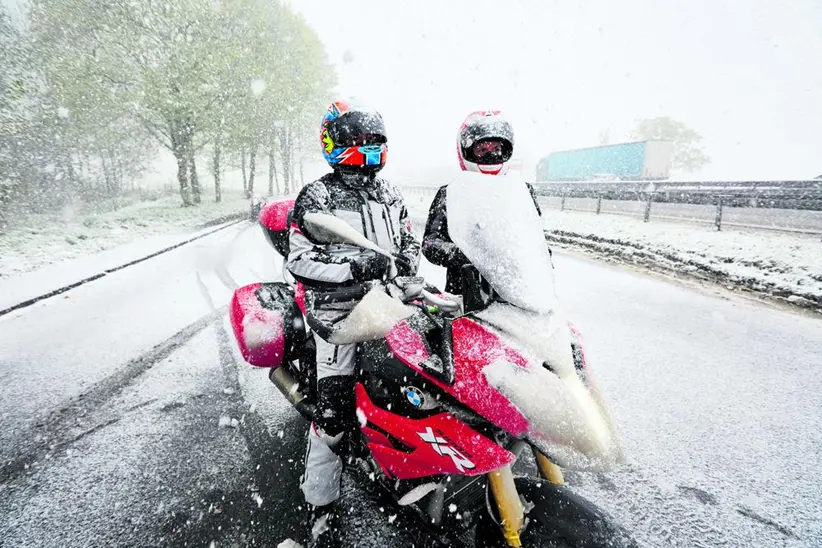
Shop your motorcycle gear here: Revzilla
If the sun is low and behind you – particularly if the road is wet and reflective – oncoming traffic will struggle to see you.
Look in your mirrors and if all you see is blinding glare, that’s what the oncoming traffic are having to cope with. Adjust your plan on the basis that they haven’t seen you.
Do a pre-ride draft check
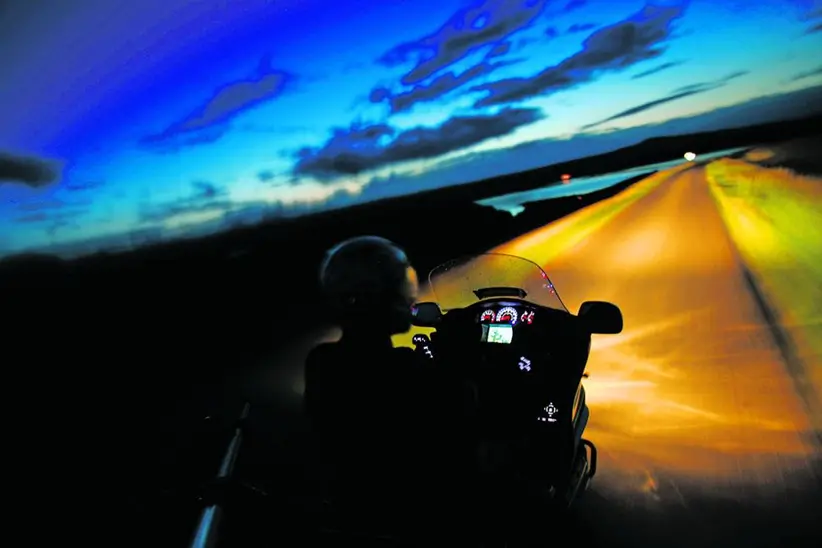
Yes, you need layers and waterproofing, but many riders forget about sealing around neck, cuffs and waist closures more effectively. Freezing drafts don’t just undo most of your insulation efforts, they’re dangerously distracting so it’s important to sort them before you set off on your ride.
The old-school advice was to brake using 50:50 front and rear in the cold and wet but with modern bikes and tyres that’s nonsense.
The front brake is the main brake in winter, just like it is in summer. You should always be smooth on the brakes, but it’s more important when it’s slippery – load up the front progressively, but not slowly, and get as much weight as possible over the front for maximum braking.
Be ready to move
Most of the time in winter you won’t need to move your body because you won’t be carrying enough lean angle to make it worth bothering, and shifting about might unsettle the bike.
But you need to be ready to move and be prepared to take your weight on your feet so you can shift about if necessary. In winter, it’s usually tight corners and roundabouts where you need to think about your body position.
Here, nervous riders often lean their body away from the bend, pushing the bike down beneath them. This is an error, because it means the bike is carrying more lean, and is at more risk of sliding. In those situations, it pays to smoothly drop your upper body towards the inside of the corner so the bike doesn’t have to lean as far.
Check for shadows
If it was frosty first thing, look for shadows. Even if it’s warmed up by the time you’re out riding, ice can linger all day out of the sun.
Pick the right line
Minimising lean angle is crucial in winter, yet many riders don’t straighten out bends and roundabouts where they could do safely. Straight-lining roundabouts has the added advantage that it keeps you away from the edges where diesel is most likely to have sloshed out from cars and trucks.
Also, consider squaring off tighter corners by taking a straighter line in, slowing down more than usual, turning the bike, and then lifting it up to drive out. This reduces the time you spend leant over, yet in our tests proved quicker than taking the traditional long sweeping line.
Know your friction coefficients
It’s important to know your limitations when riding in winter
Most riders are over-cautious in the wet. On a good dry road the coefficient of friction (COF) will be around 0.7 – this is a ratio of how much sideways force is required to move a block compared to its weight.
If the road is wet, the COF would be about 0.5. If it was icy you’d get about 0.1. The drop-off from 0.7 to 0.5 is just under 30 percent, but most riders’ speed reduction is much greater than that – you don’t have to slow down as much as you think – unless it’s icy, in which case you need to slow down a huge amount. Don’t forget that black ice is harder to spot than white ice, too.
Skill-fade will be very significant if you don’t ride in winter. Use the dodgy conditions as a chance to hone skills that will make you faster and safer once the roads dry out and the sun reappears. You’ll especially feel the benefit when negotiating summer showers.
Get some training
If you live in the UK and you’re not confident in poor conditions, you’re missing out on a huge amount of riding.
Decent training could transform your winter, spring, summer and autumn enjoyment on two wheels. It’s not as expensive as you might think (certainly cheaper than that shiny end-can you keep looking at online), and it’ll transform every single mile you ride, all year, forever.
